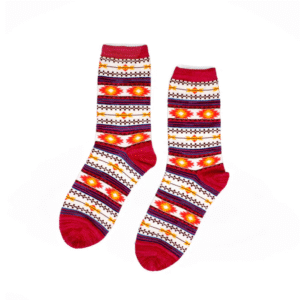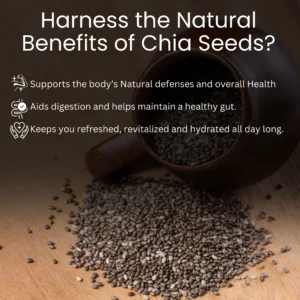Hair is not just a part of our appearance; it’s deeply intertwined with our identity, culture, and self-esteem. Hair oil, one of the oldest and most cherished hair care remedies, has stood the test of time, used for centuries in beauty routines across the world. But what exactly is hair oil? Why is it so revered? And how can it benefit you?
This article dives deep into everything you need to know about hair oil, helping you understand its types, benefits, how to use it, and how to choose the right one for your hair type.
Many low-quality personal care products contain parabens, sulfates, phthalates, and artificial fragrances that can harm your body in the long term
🌟 Introduction to Hair Oil
Hair oil is a nourishing liquid or semi-liquid substance derived from natural or synthetic sources, applied to the hair and scalp for conditioning, hydration, strength, shine, and overall hair health. While the formula varies across cultures and brands, the core goal remains consistent — to protect, strengthen, and enhance hair.
Hair oiling is a ritual passed down through generations, particularly in Asian, African, and Middle Eastern cultures. Today, even modern trichology (the scientific study of hair) supports the regular use of oils to maintain healthy hair.
🧬 Composition of Hair Oil
Hair oils are typically composed of:
Carrier Oils: Base oils like coconut, almond, castor, argan, or jojoba.
Essential Oils: Additives like lavender, tea tree, or rosemary for aroma and scalp therapy.
Vitamins & Minerals: Vitamin E, B-complex, zinc, and iron.
Herbal Extracts: Amla, bhringraj, neem, aloe vera, and hibiscus.
Silicones (in synthetic oils): For added shine and smoothness.
📚 Historical Significance of Hair Oil
Hair oiling has a rich cultural history:
🕌 India
India has a longstanding tradition of Ayurvedic hair oiling, using ingredients like bhringraj, amla, neem, and coconut oil. Oiling is seen as a self-care ritual passed from mother to daughter.
🇪🇬 Egypt
Ancient Egyptians used castor oil and almond oil for hair shine and strength. Cleopatra herself was known for her elaborate hair and oil treatments.
🌍 Africa
African hair care heavily relies on shea butter, castor oil, and jojoba oil to moisturize kinky or coily hair types.
🇬🇷 Greece
Greeks used olive oil as a symbol of beauty and health, massaging it into the scalp to maintain healthy hair.
💡 Why Use Hair Oil?
Hair oil is not just for shine or smell. It serves multiple functional benefits:
- Nourishes the Scalp
Oils seep into the scalp, delivering essential nutrients and improving blood circulation. This promotes hair growth and reduces dandruff.
- Strengthens Hair Roots
Many oils contain proteins and minerals that strengthen the roots, preventing hair fall and thinning.
- Prevents Dryness
Hair oils act as natural emollients, sealing moisture into the hair shaft. This is especially beneficial in dry, cold climates or for chemically treated hair.
- Reduces Frizz and Adds Shine
Oils smoothen the cuticle layer of the hair, giving it a glossy, frizz-free appearance.
- Prevents Breakage and Split Ends
Lubrication from oils reduces friction between hair strands, minimizing breakage and split ends.
🔬 Types of Hair Oils
There are many hair oils available, each catering to different hair needs. Here’s a look at the most popular ones:
🥥 1. Coconut Oil
Deep penetrative properties
Rich in lauric acid
Strengthens roots and adds luster
Great for all hair types
🌰 2. Almond Oil
High in vitamin E, magnesium, and omega-3
Encourages growth and shine
Ideal for damaged or dull hair
🌿 3. Argan Oil
Known as “liquid gold” from Morocco
High in antioxidants and fatty acids
Softens and moisturizes
Great for styling and frizz control
🌼 4. Jojoba Oil
Closely mimics scalp’s natural oil (sebum)
Non-greasy and easily absorbed
Good for dandruff and scalp health
🌾 5. Castor Oil
Thick and sticky
Rich in ricinoleic acid
Promotes hair thickness and reduces hair loss
🍃 6. Amla Oil
Indian gooseberry-based
Strengthens follicles and delays greying
Great for hair darkening and volume
💐 7. Essential Oil Blends
Lavender, rosemary, peppermint, etc.
Usually mixed with carrier oils
Improve circulation and stimulate growth
🧴 How to Apply Hair Oil Correctly
Applying hair oil may seem simple, but technique matters:
Step-by-Step Guide:
Choose the Right Oil: Based on your hair type and concerns.
Warm the Oil: Slightly warm oil increases absorption (but never overheat).
Part Your Hair: Divide your hair into sections.
Apply to Scalp: Use fingertips or cotton balls to gently massage oil into the scalp.
Spread to Ends: Smooth the oil down the hair shaft to the ends.
Massage: Spend 5–10 minutes massaging to boost circulation.
Wrap Hair: Use a towel or shower cap for better absorption.
Leave-in: Ideally overnight or for at least 2–3 hours.
Rinse Off: Use a mild sulfate-free shampoo. Avoid hot water.
Note; Here are some top Hair oil options available in Pakistan that cater to different needs,
💇♀️ How Often Should You Oil Your Hair?
Oily Scalp: Once a week
Dry Scalp: 2–3 times a week
Curly/Coily Hair: 3 times a week or more
Dandruff: Use medicated oils twice weekly
👩🔬 Hair Oil by Hair Type
- Dry Hair
Use coconut, argan, or olive oil
Add honey or aloe vera for hydration
- Oily Hair
Use light oils like jojoba or tea tree
Avoid over-application
- Curly Hair
Heavy oils like castor, avocado, and shea butter work well
- Damaged or Chemically Treated Hair
Argan oil, almond oil, and essential oils help repair
- Hair Loss
Bhringraj, rosemary, and castor oil promote regrowth
⚖️ Natural vs. Synthetic Hair Oils
Feature Natural Oils Synthetic Oils
Ingredients Plant-based, no chemicals Often include silicones, alcohol
Effect Long-term nourishment Instant shine, temporary benefit
Scalp Health Improves over time May clog pores if not rinsed well
Cost Moderate Varies — some cheap, some premium
Usage Frequency Weekly or more Occasional, for styling
✅ Final Thoughts
Hair oil is more than just a grooming product — it’s a symbol of self-care, tradition, and health. Whether you’re battling dryness, hair fall, or dullness, adding the right oil to your routine can transform your hair game.
The key lies in understanding your hair’s needs, choosing the right oil, and applying it regularly. With consistency and care, you’ll soon experience the age-old magic of hair oiling — naturally strong, shiny, and healthy hair!








